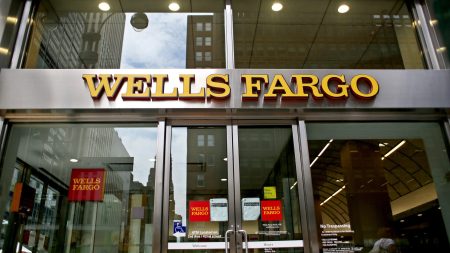A savings account is a safe place to keep your emergency fund or set aside money for short-term financial goals. These accounts are offered by almost every bank and credit union in the U.S., and they can help you grow your savings through the interest they pay.
Opening a savings account can involve steps such as shopping around for low fees and the highest rates, gathering the required information and setting up online banking.
Opening a savings account: Step-by-step
It’s relatively easy to open a savings account at most banks and credit unions, although it usually takes several steps.
1. Choose the right savings account for you
Before you open your account, make sure you’ve chosen the right bank for your needs. Key features when making your choice can include:
Some banks offer multiple savings accounts. If you’re considering a bank that offers more than one option, compare them using the criteria above, and look out for any distinguishing features unique to each account.
Your savings account also should mesh with your priorities and goals, says Mary Hines Droesch, Head of Product for Consumer, Business and Wealth Management Banking and Lending at Bank of America. “Whether you’re saving for a home, education, a car, vacations, or an emergency fund. For example, if you’re working to build a savings habit, consider an account that automates the process for you,” said Droesch.
Sometimes, banks offer different tiers of savings accounts, with each level requiring a certain minimum balance. In this case, your choice at a particular bank may be limited to the account, or tier, you qualify for.
It’s often convenient to open a savings account at the same bank, if you already have a checking account. Still, it’s worth comparing other options to make sure your bank is offering savings account features that are important to you, such as competitive rates.
2. Gather required documents
When you open any bank account, you’ll need to provide some information about yourself, as well as some documents. Make sure you — and any joint account owners — have the following information ready when you open the account in person or online:
- Government-issued identification, such as a driver’s license or passport
- Social Security number
- Date of birth
- Address (and a proof of address, if your ID lists a previous address)
- Contact information
- Bank account information to fund your new account, if applicable
You may need to lift a credit freeze if you have one in place before opening a new bank account.
3. Choose a joint or individual account
Open an individual account if you want a savings account just for yourself. A joint account is an account owned with another person, such as your spouse or your child.
Joint accounts offer some benefits:
- They make it easier for your spouse or child to access funds that are shared.
- The presence of a joint owner can provide a higher level of FDIC insurance (up to $500,000 instead of $250,000, since each person has $250,000 worth of deposit insurance in the joint account ownership category).
4. Complete the application
Complete your application with all of the required information and wait for the bank to approve your account. This usually happens quickly, within one or two business days.
5. Fund your account
You may need to make an initial deposit when starting up a savings account. Accounts that have a minimum opening deposit often require an amount between $25 and $100. You can usually fund the account with cash or a check, if you’re opening the account in person. To deposit money electronically, you can often make a mobile check deposit or transfer funds from a linked account.
In addition to an opening deposit, some savings accounts charge a monthly maintenance fee that can eat away at your savings. Some banks require that the account holder have a minimum balance of a few hundred dollars to waive this fee.
Make sure you deposit enough to meet the minimum opening deposit and maintain a sufficient balance to avoid any maintenance fees when you’re opening an account.
Can you open a savings account online?
Most banks and credit unions let their customers do their banking online, and that includes opening a new account. When you go with a bank that doesn’t maintain any branches, you’ll probably be required to open the account online.
Many online-only banks offer the best savings account options, with low minimum balances, low or no maintenance fees, and high APYs. This can make online savings accounts the best choice for anyone who doesn’t mind potentially doing many of their transactions from a computer or mobile device.
Those who are more comfortable doing their banking in person might be better off with a bank that offers branches.
How to choose the best savings account
The best high-yield online savings account can help you earn a competitive yield while avoiding maintenance fees.
APY
The higher the APY, the faster your savings will grow.
Consider this example:
You deposit $10,000 in a savings account at a bank that pays 0.01 percent APY. Over the course of a year, you’ll earn $1 in interest. Alternatively, if you choose an account elsewhere that offers 4 percent APY, you’d earn $400 a year instead, or $399 more than the low-yielding bank. (This assumes the APY stayed the same for a year and you didn’t make any additional deposits or withdraw any money.)
Fees
Some banks charge a monthly maintenance fee unless you meet certain requirements. Typically, you can have the fee waived by making a minimum number of transactions per statement cycle or maintaining a balance above a set threshold.
If you deposit $500 to an account that charges a $5 monthly fee and you don’t make further deposits, by the end of the year you’ll only have $440, a loss of more than 10 percent of your initial balance. Look for an account with no monthly fee so you don’t have to worry about such charges eating away at your balance.
It’s important to know whether there’s an early closeout fee, if there’s a chance you won’t keep the account open for very long. Banks that charge such a fee often do so if you close the account within the first 90 to 180 days of opening it.
Reason for saving
Finally, consider your reason for saving. Your choice of savings account — and bank — can depend upon your reason for saving money.
If you want to build an emergency fund that you can access at a moment’s notice, opening an account with a bank where you also have a checking account makes a lot of sense.
If you’re saving for a goal — such as a car or a down payment on a home — and don’t need easy access to the funds, it can make more sense to shop around for the best rates, which might be found at an online bank. A higher yield can help you reach your goal faster.
What to do if you can’t open a savings account
Sometimes, a bank will deny a new savings account application. This can happen for a variety of reasons, including unpaid bank fees or a history of bouncing checks.
Many banks use ChexSystems, a consumer reporting agency, when making approval decisions. If your bank uses ChexSystems and you’re denied an account, you can request a disclosure report to find out why. You can also dispute any errors you find that may be negatively impacting your report.
If your banking history is preventing you from opening a savings account, you can look for a bank that offers second-chance accounts. While not the same as a savings account, second-chance accounts are more widely accessible. These accounts often come with standard checking account features, such as ATM access, bill pay and mobile banking. Usually, if you can keep your account in good standing for a period of time — often 12 months — you’ll be able to upgrade to a standard checking or savings account.
Bottom line
Savings accounts are valuable tools for people who want to set aside money for a goal or an emergency fund. Consider all of your options, including local banks and online banks, and look for the account that offers the best interest rates at the lowest cost. Taking the time to do some comparison shopping can help you get the most out of your money.
— Freelance writer Emily Batdorf and Bankrate senior writer Matthew Goldberg contributed to updates of this story.
Read the full article here










